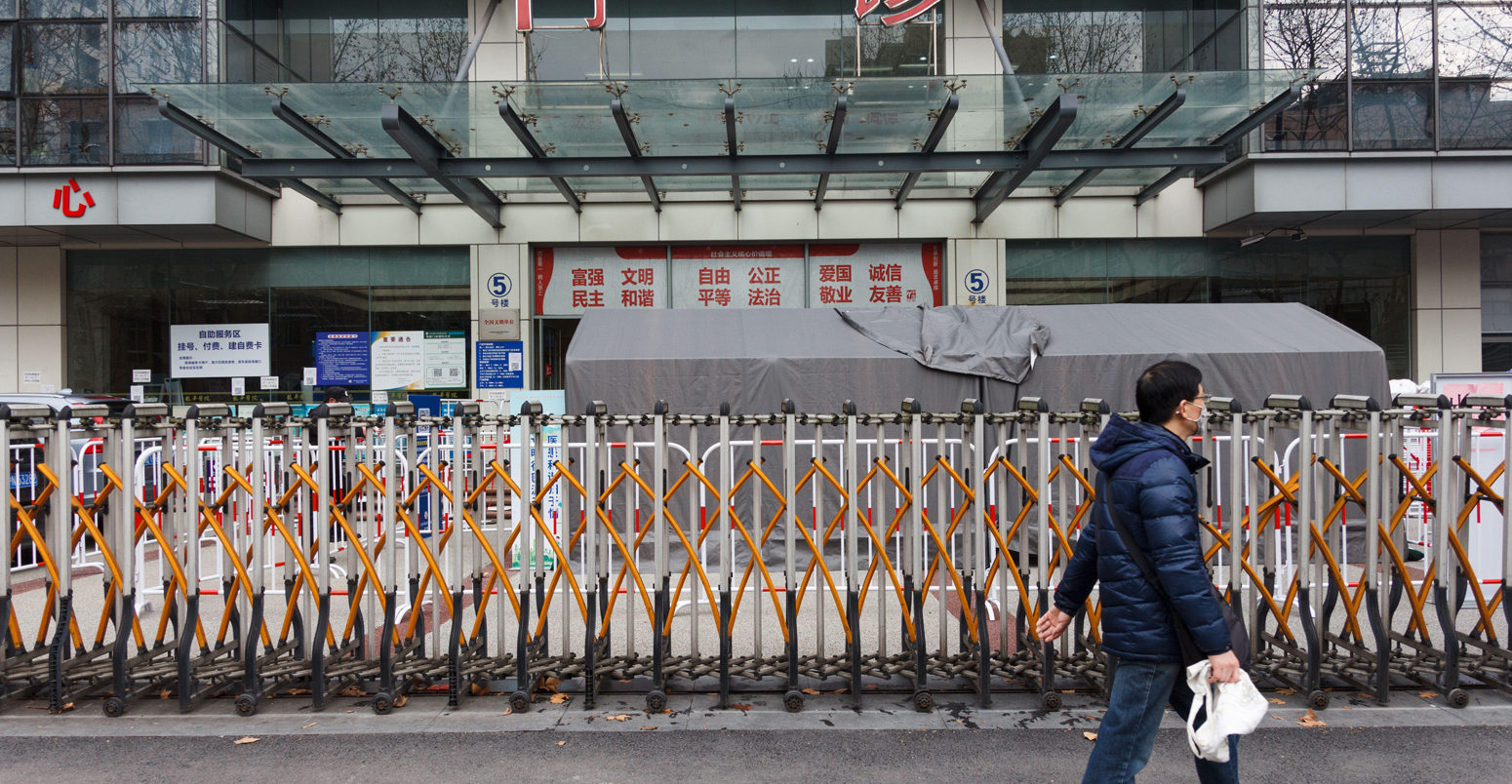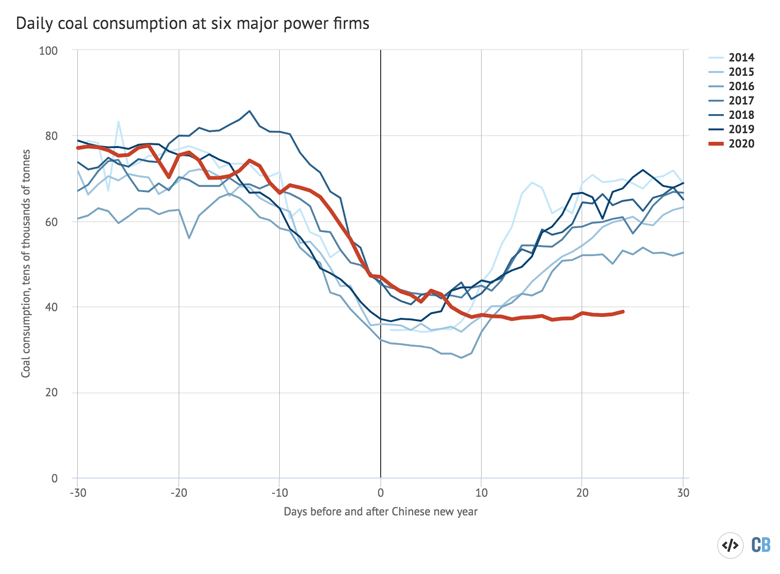As China battles one of the most serious virus epidemics of the century, the impacts on the country’s energy demand and emissions are only beginning to be felt.

A hospital in Shanghai, China, closed due to the coronavirus outbreak. Credit: Janusz Kolondra / Alamy Stock Photo
Electricity demand and industrial output remain far below their usual levels across a range of indicators, many of which are at their lowest two-week average in several years. These include:
- Coal consumption at power plants was down 36%
- Operating rates for main steel products were down by more than 15%, while crude steel production was almost unchanged
- Coal throughput at the largest coal port fell 29%
- Coking plant utilization fell 23%
- Satellite-based NO2 levels were 37% lower
- Utilization of oil refining capacity was lowered by 34%
- At their peak, flight cancellations were reducing global passenger aviation volumes by 10%, but the sector appears to be recovering, with global capacity down 5% on year in February as a whole.
All told, the measures to contain coronavirus have resulted in reductions of 15% to 40% in output across key industrial sectors. This is likely to have wiped out a quarter or more of the country’s CO2 emissions over the past four weeks, the period when activity would normally have resumed after the Chinese new-year holiday. (See methodology below.)
Over the same period in 2019, China released around 800m tonnes of CO2 (MtCO2), meaning the virus could have cut global emissions by 200MtCO2 to date. The key question is whether the impacts are sustained, or if they will be offset – or even reversed – by the government response to the crisis.
Initial analysis from the International Energy Agency (IEA) and Organization of the Petroleum Exporting Countries (OPEC) suggests the repercussions of the outbreak could shave up to half a percent off global oil demand in January-September this year.
However, the Chinese government’s coming stimulus measures in response to the disruption could outweigh these shorter-term impacts on energy and emissions, as it did after the global financial crisis and the 2015 domestic economic downturn.
A country in shutdown
Every winter, during Chinese new year, the country closes down for a week, with shops and construction sites closing and most industries winding down operations. The holiday has a significant short-term impact on energy demand, industrial output and emissions.
The blue lines on the chart below show how coal-fired power generation typically drops by an average of 50% in the 10 days following the eve of Chinese new year, marked as zero on the x-axis.
This year, shown in red, the usual fall in energy use has been prolonged by 10 days so far, with no sign of rebound. This is because the annual holiday was extended to give the government more time to get the epidemic under control – and demand has remained subdued, even after the official resumption of work on 10 February.
 Daily coal consumption around the Chinese new-year period at six generating companies reporting daily data, in 10,000 tonnes per day. X-axis shows days before and after Chinese new year eve, which falls on various dates in the second half of January or in February. Source: Analysis of data from WIND Information. Chart by Carbon Brief using Highcharts.
Daily coal consumption around the Chinese new-year period at six generating companies reporting daily data, in 10,000 tonnes per day. X-axis shows days before and after Chinese new year eve, which falls on various dates in the second half of January or in February. Source: Analysis of data from WIND Information. Chart by Carbon Brief using Highcharts.
In the four-week period commencing 3 February this year, average coal consumption at power plants reporting daily data fell to a four-year low, with no sign of recovery in the most recent data, covering Sunday 1 March.
The short-term effect has been equally dramatic across a range of other industrial indicators, shown as 28-day averages in the figure below. The top left chart shows coal throughput at the main coal port, Qinhuangdao, which fell to the lowest level in four years in the four weeks to 1 March.
Similarly, refinery operating rates in Shandong province, the country’s main centre for oil refining, fell to the lowest level since autumn 2015 (below left), indicating a sharply reduced oil demand outlook. Furthermore, as expected, underlying demand for oil products, steel and other metals has fallen much more than output, resulting in record-high stockpiles, which will put pressure on production going forward.

Operating rates of industrial capacity in China (%). Steel product (steel bar and wire rod) operating rates show the effect of the Chinese new year holiday each year. Source: Analysis of industry surveys reported by WIND Information. Chart by Carbon Brief using Highcharts.
Strikingly, all indicators of industrial capacity utilisation – coal power plants, blast furnaces, coking, steel products, refineries – deteriorated further in the week commencing 10 February, when business was officially expected to resume.
The rebound in industrial operation and domestic fossil fuel consumption has proven to be slow, with the first signs of the resumption of activity evident in the national aggregate data only in the past week, but still with a long way to go. This is not for lack of trying though, as some cities have reportedly even resorted to mandating factories to use more electricity, whether or not they have the personnel to resume production, in an effort to doctor a resurgence in power demand. While anecdotal, this is testimony to the massive pressure on local officials to jumpstart the economy.
Taken together, the reductions in coal and crude oil use indicate a reduction in CO2 emissions of 25% or more, compared with the same two-week period following the Chinese new year holiday in 2019. This amounts to approximately 100MtCO2 – or 6% of global emissions over the same period.




